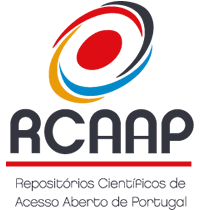Isoquinolinequinone N-oxides as potent antitumor compounds against pancreatic cancer cell lines: preliminary results
DOI:
https://doi.org/10.48797/sl.2025.303Keywords:
PosterAbstract
Background: Pancreatic ductal adenocarcinoma (PDAC) is one of the most aggressive malignancies, being the 7th leading cause of cancer-related mortality worldwide. PDAC remains associated with an extremely poor prognosis, owing to drug resistance and to the lack of alternative therapeutic options. Standard chemotherapy typically involves gemcitabine, either alone or combined with paclitaxel. Moreover, Chitinase-3-Like 1 (CHI3L1) was identified as a key protein responsible for reducing PDAC drug response in vitro [1]. Thus, the identification of new molecules with antitumor potential and that can counteract drug resistance will be of great significance, as new therapeutic agents to be used either alone or in combination with chemotherapy. Interestingly, a family of Isoquinolinequinone (IQQ) N-oxides with antitumoral activity against counterpart pairs of sensitive and multidrug-resistant cell lines from non-small cell lung cancer and colorectal cancer has been recently identified [2,3]. Objective: The aim of this study is to explore the antitumor and chemosensitizing activity of a family of seven IQQ N-oxides in a panel of PDAC cell lines. Methods: The cytotoxicity effect of seven IQQ N-oxides is being assessed with the Sulforhodamine B (SRB) assay in four PDAC cell lines: PANC-1, BxPC3, Miapaca-2 and Capan-2. Gemcitabine was used as a positive control [1]. The impact of these compounds on the expression levels of CHI3L1, β-catenin and other proteins involved in relevant cancer-related pathways, such as ERK signalling, will be analysed by Western blotting. Furthermore, the therapeutic combination of the most promising IQQ N-oxides with gemcitabine will be evaluated by SRB. Results: Preliminary results demonstrated that the GI50 concentrations of three IQQ N-oxides were around or below 2 µM, in both PANC-1 and BxPC3 cell lines. Conclusion: This preliminary work highlights the antitumor potential of these isoquinolinequinone N-oxides in PDAC cell lines.
References
1. Xavier, C.P.R. et al. Chitinase 3-like-1 and fibronectin in the cargo of extracellular vesicles shed by human macrophages influence pancreatic cancer cellular response to gemcitabine. Cancer Lett 2021, 501, 210–23, doi: 10.1016/j.canlet.2020.11.013.
2. Barbosa, M.A.G. et al. Isoquinolinequinone N-oxides with diverging mechanisms of action induce collateral sensitivity against multidrug resistant cancer cells. Eur J Pharmacol 2025, 988, 177234, doi: 10.1016/j.ejphar.2024.177234.
3. Kruschel, R. D. et al. Discovery of Potent Isoquinolinequinone N-Oxides to Overcome Cancer Multidrug Resistance. J Med Chem 2024, 67(16), 13909-13924, doi: 10.1021/acs.jmedchem.4c00705.
Downloads
Published
How to Cite
Issue
Section
License
Copyright (c) 2025 Rúben Rodrigues, Ryan D. Kruschel, Florence O. McCarthy, M. Helena Vasconcelos, Cristina P. R. Xavier

This work is licensed under a Creative Commons Attribution 4.0 International License.
In Scientific Letters, articles are published under a CC-BY license (Creative Commons Attribution 4.0 International License), the most open license available. The users can share (copy and redistribute the material in any medium or format) and adapt (remix, transform, and build upon the material for any purpose, even commercially), as long as they give appropriate credit, provide a link to the license, and indicate if changes were made (read the full text of the license terms and conditions of use).
The author is the owner of the copyright.









